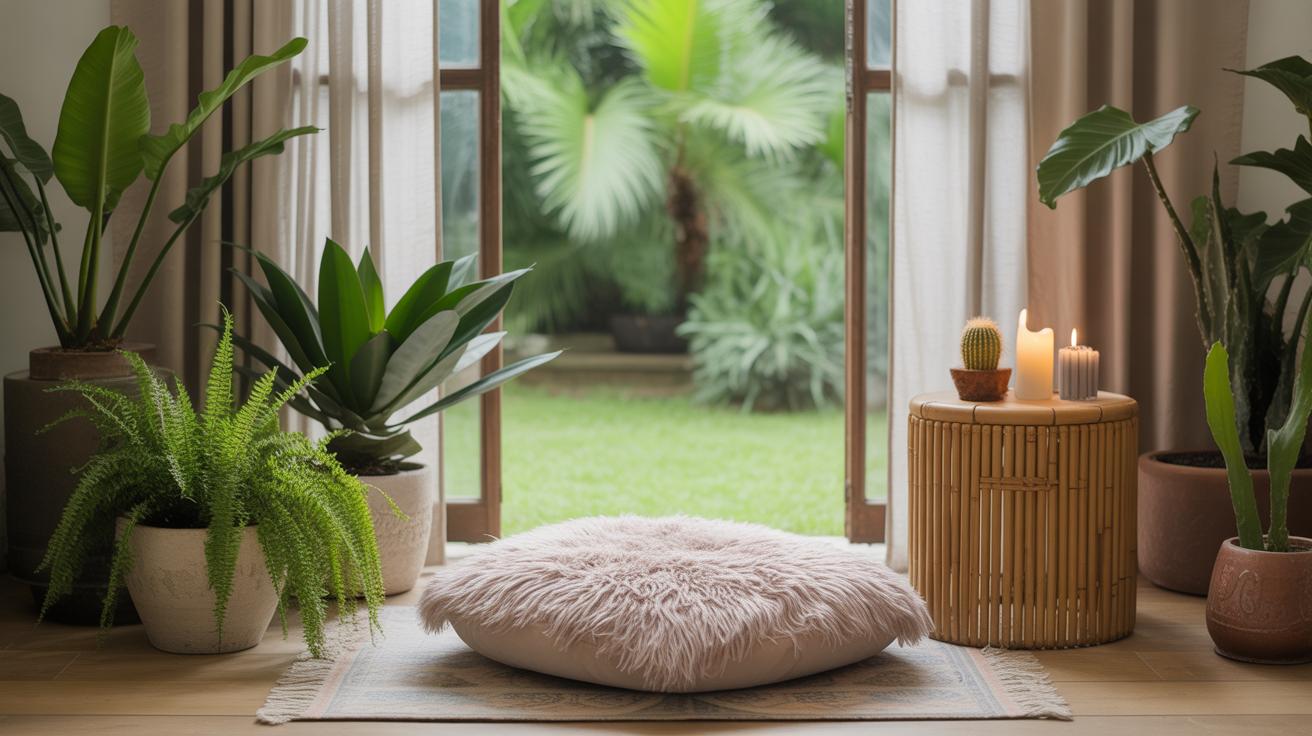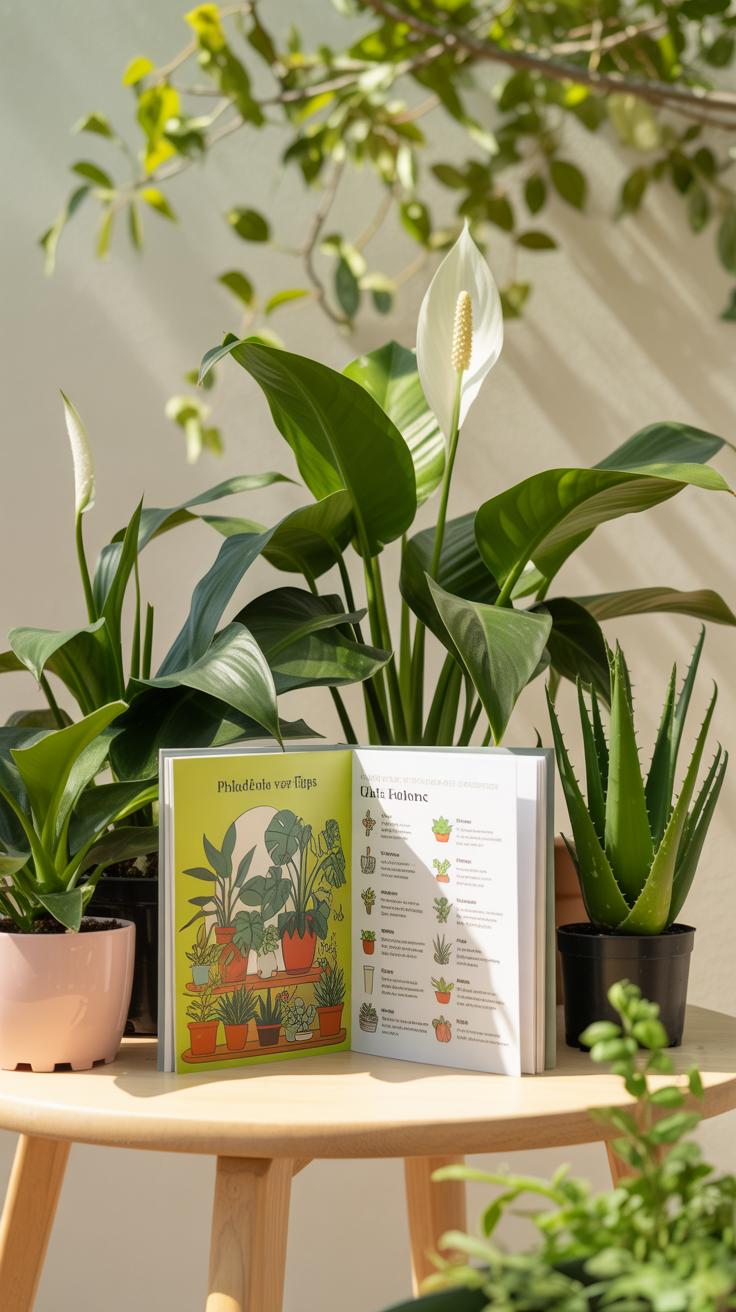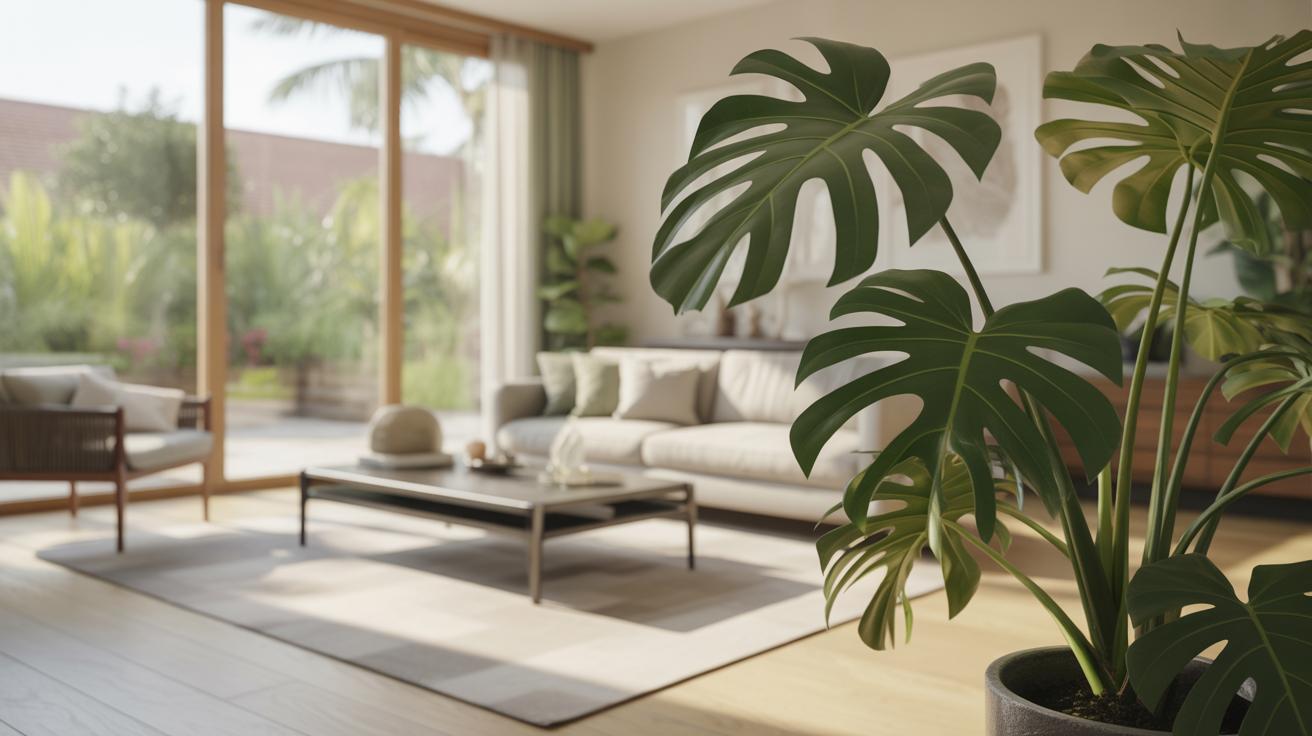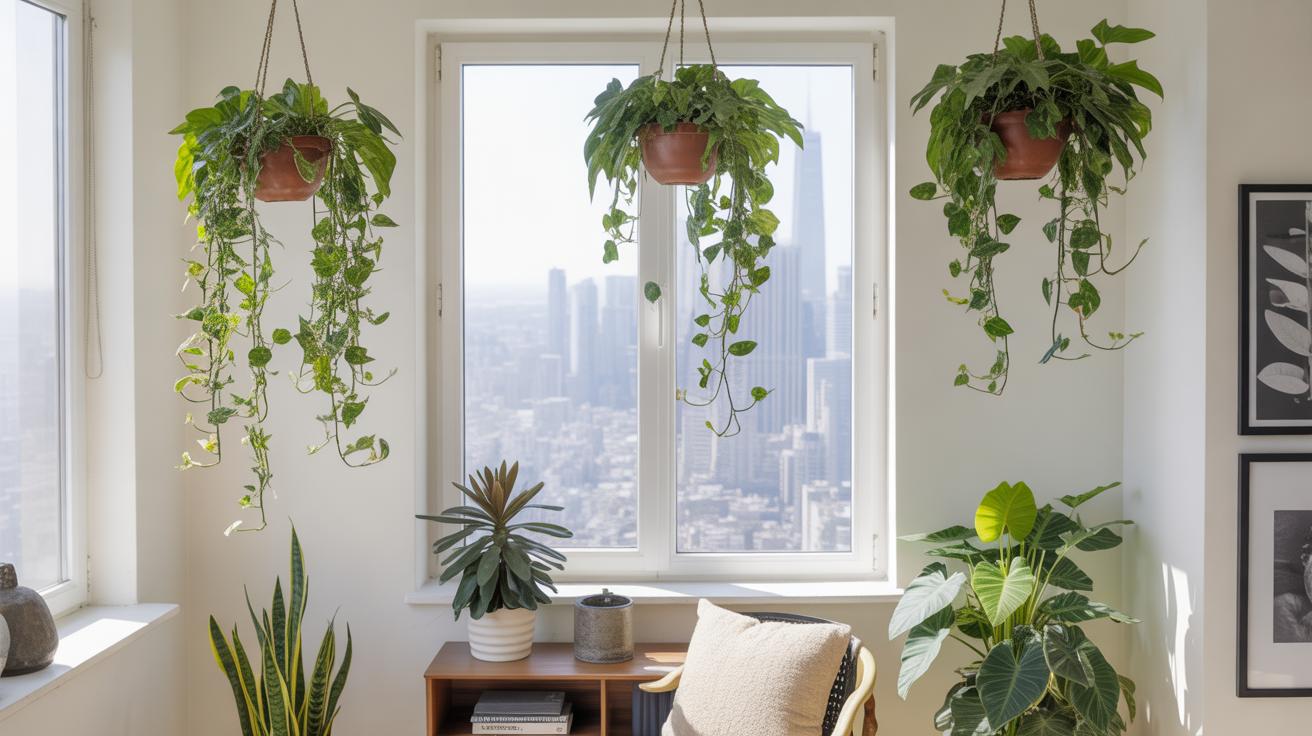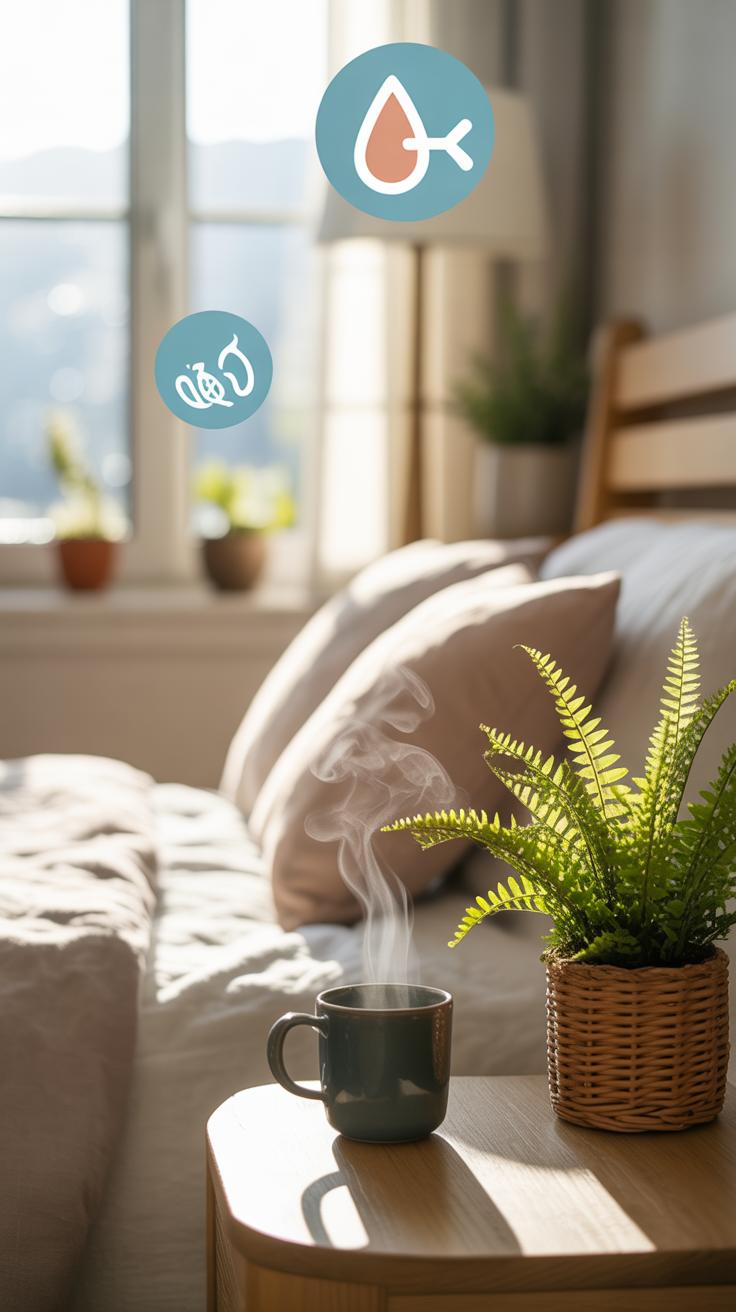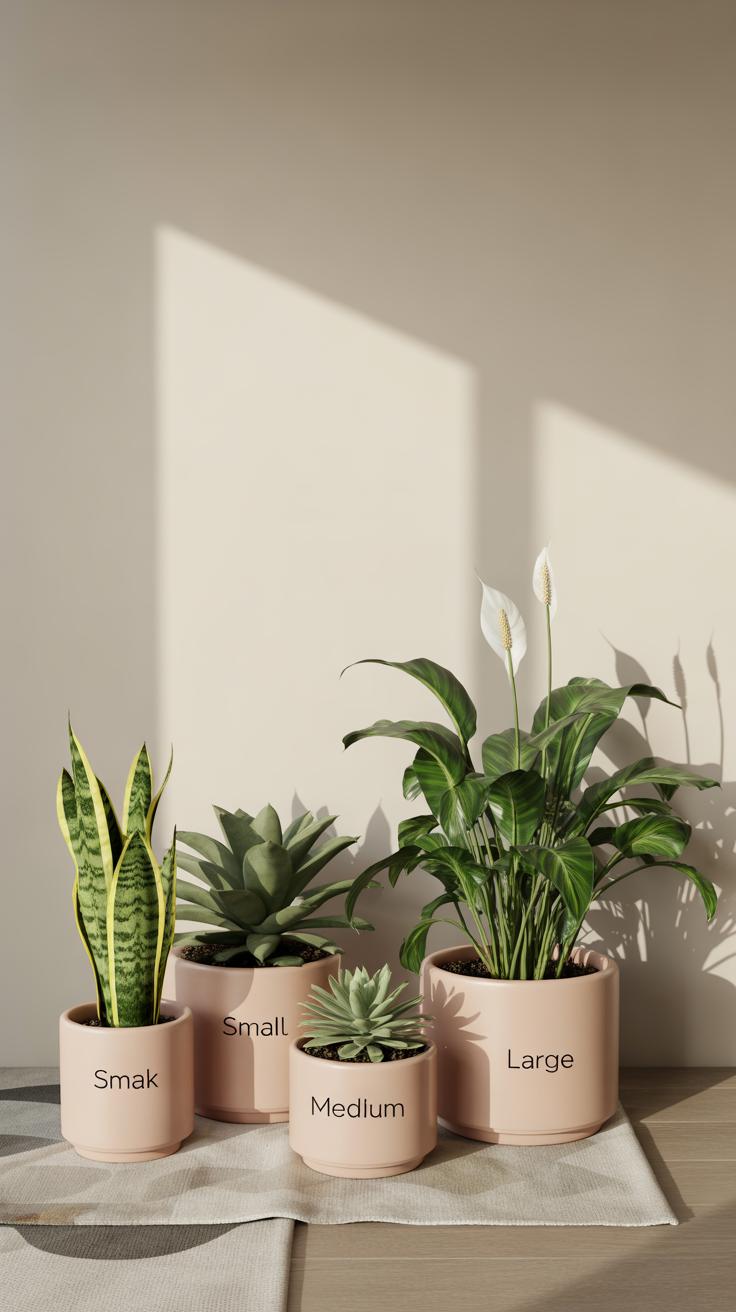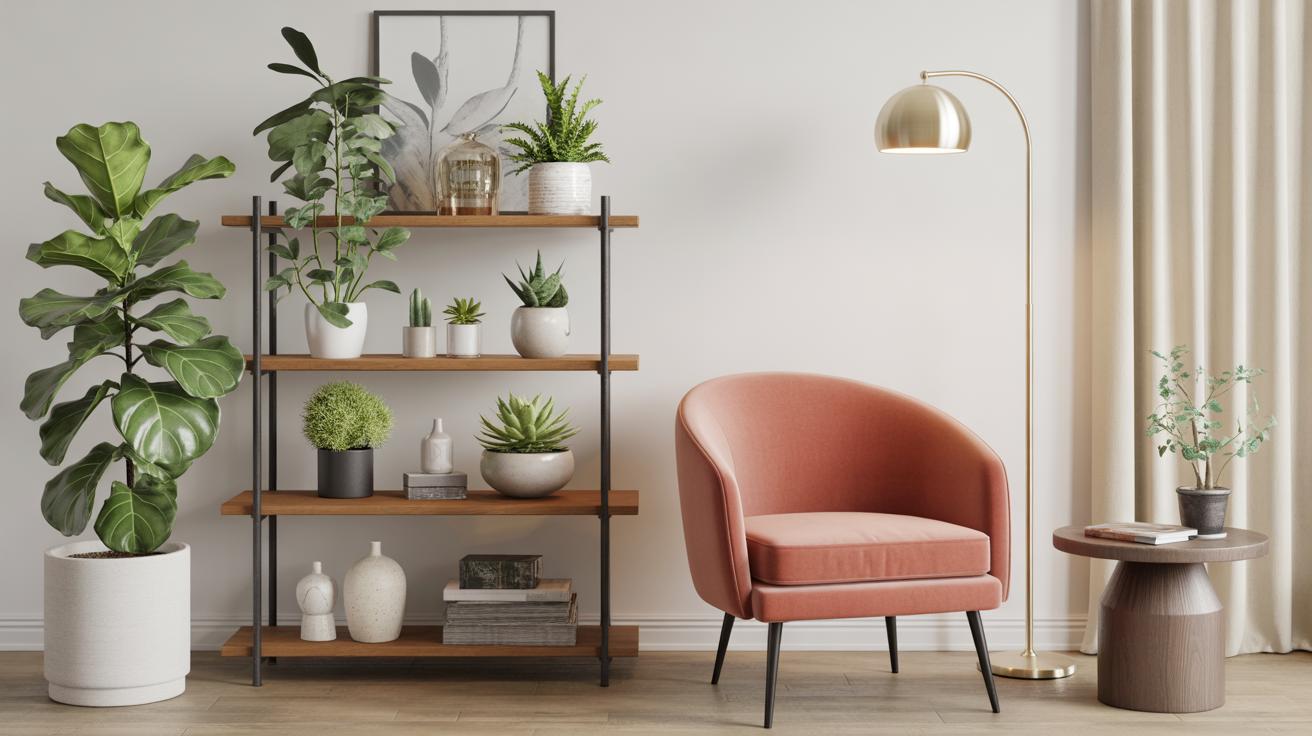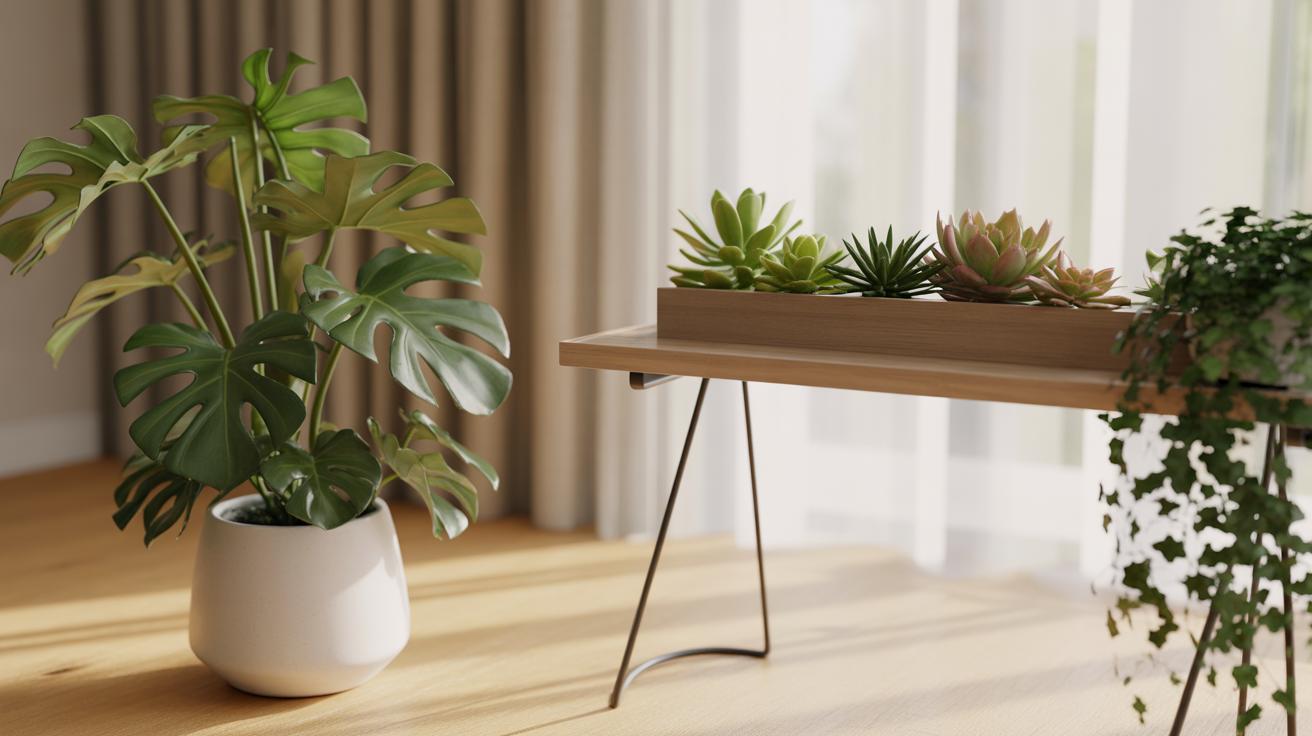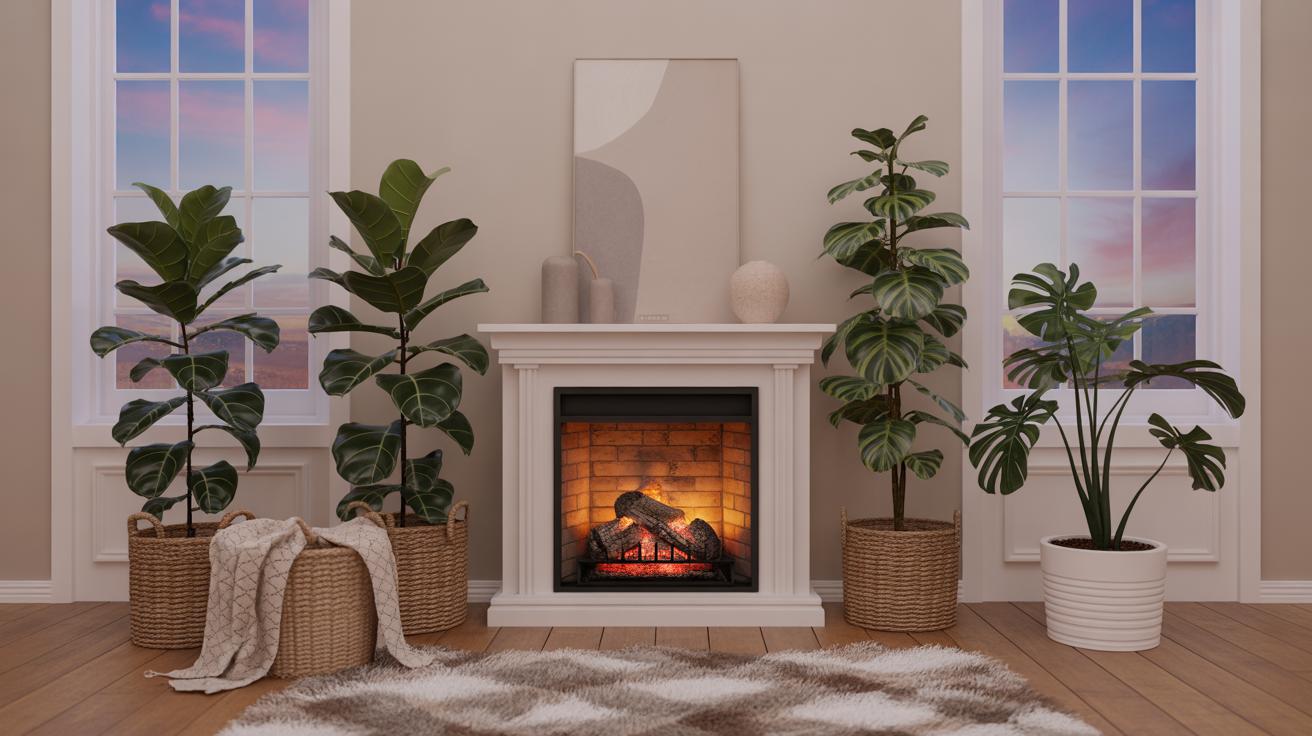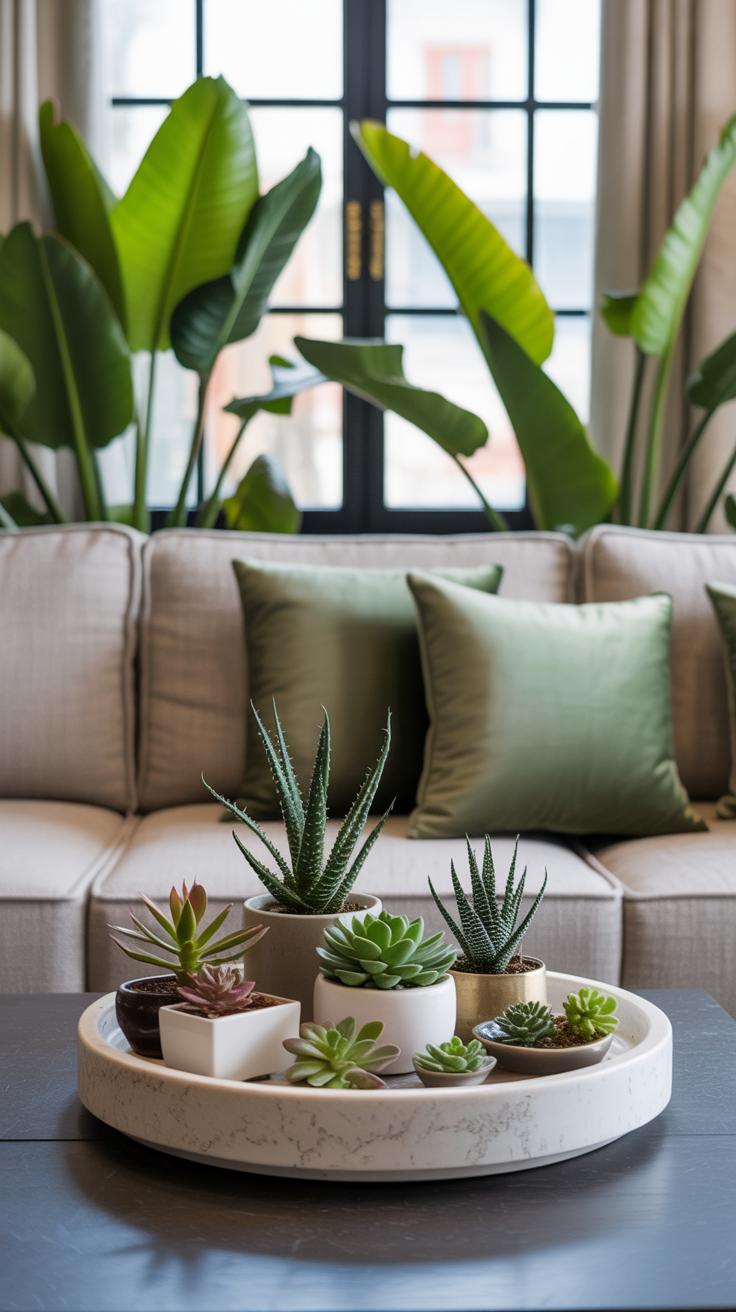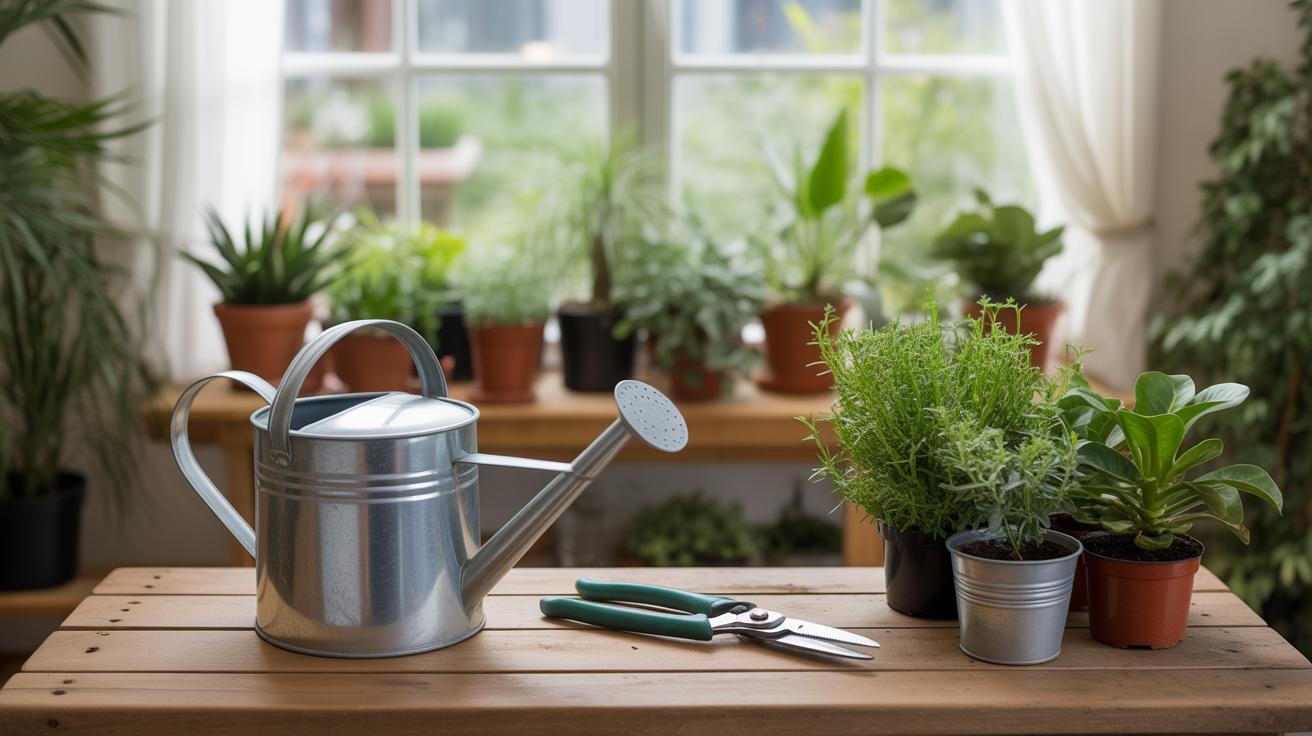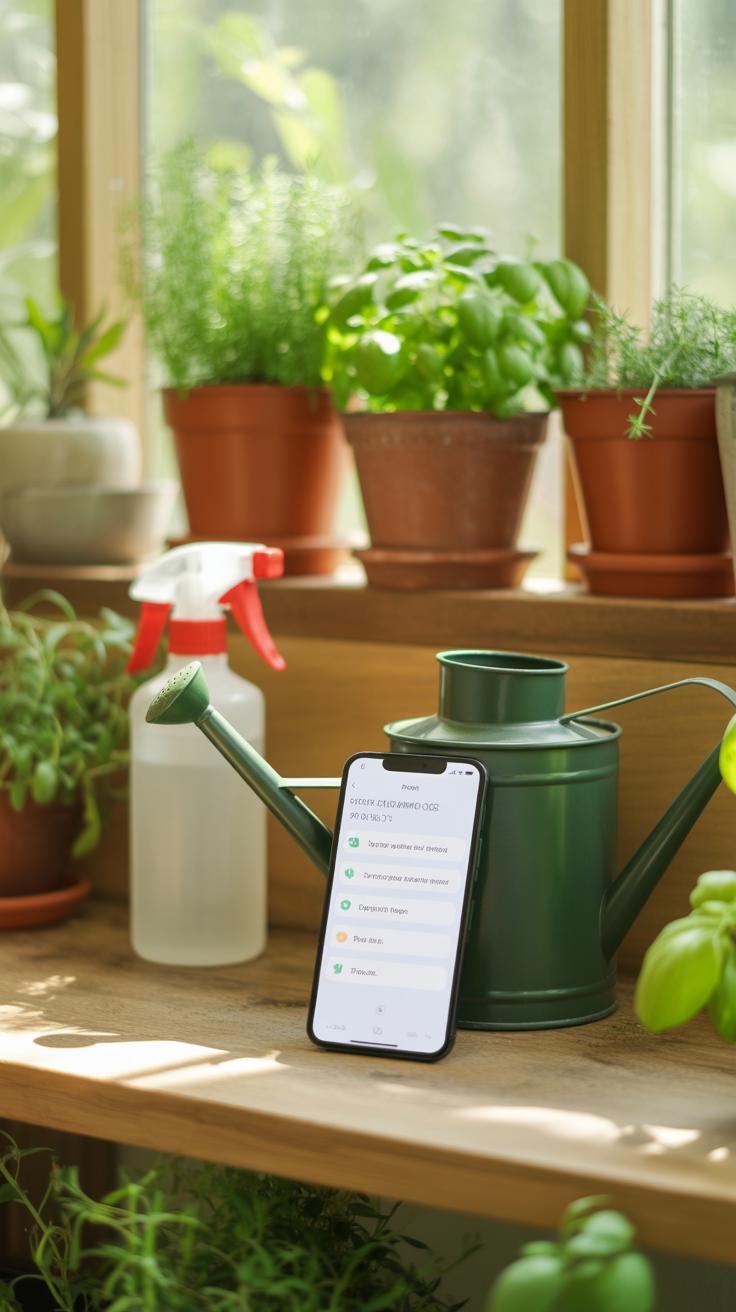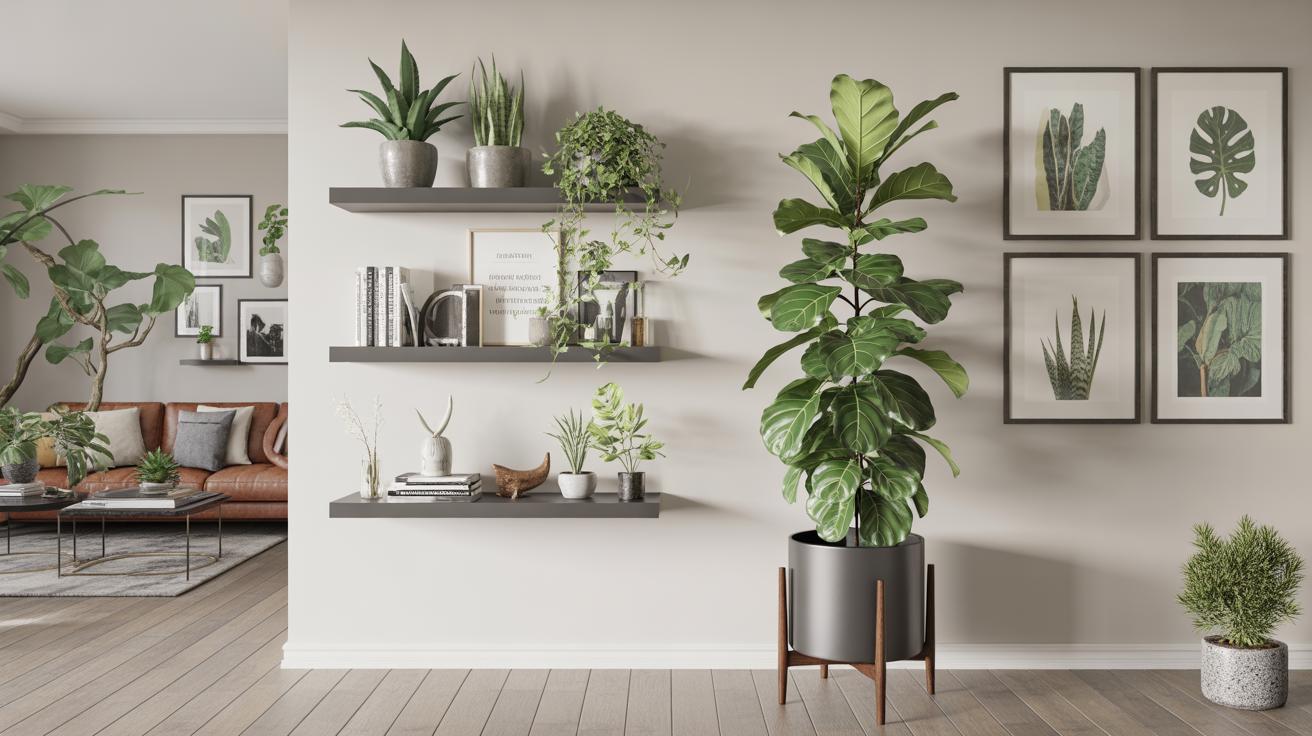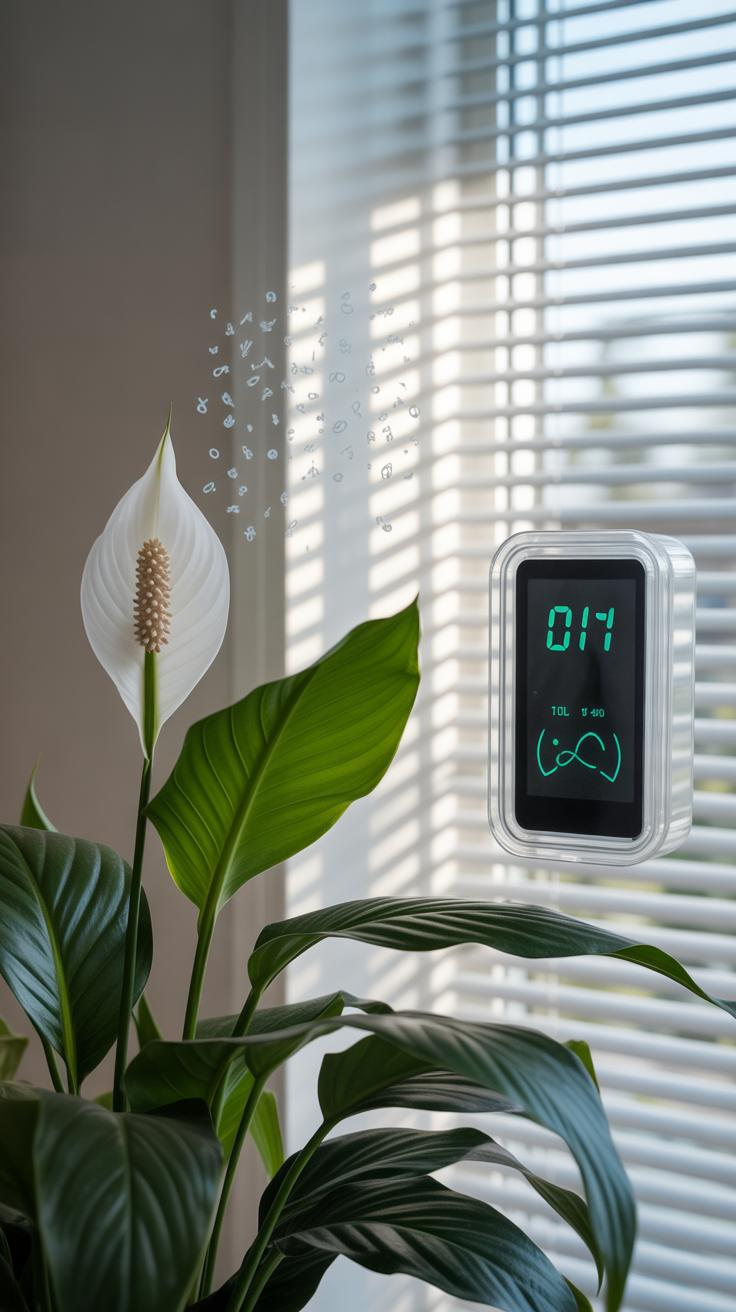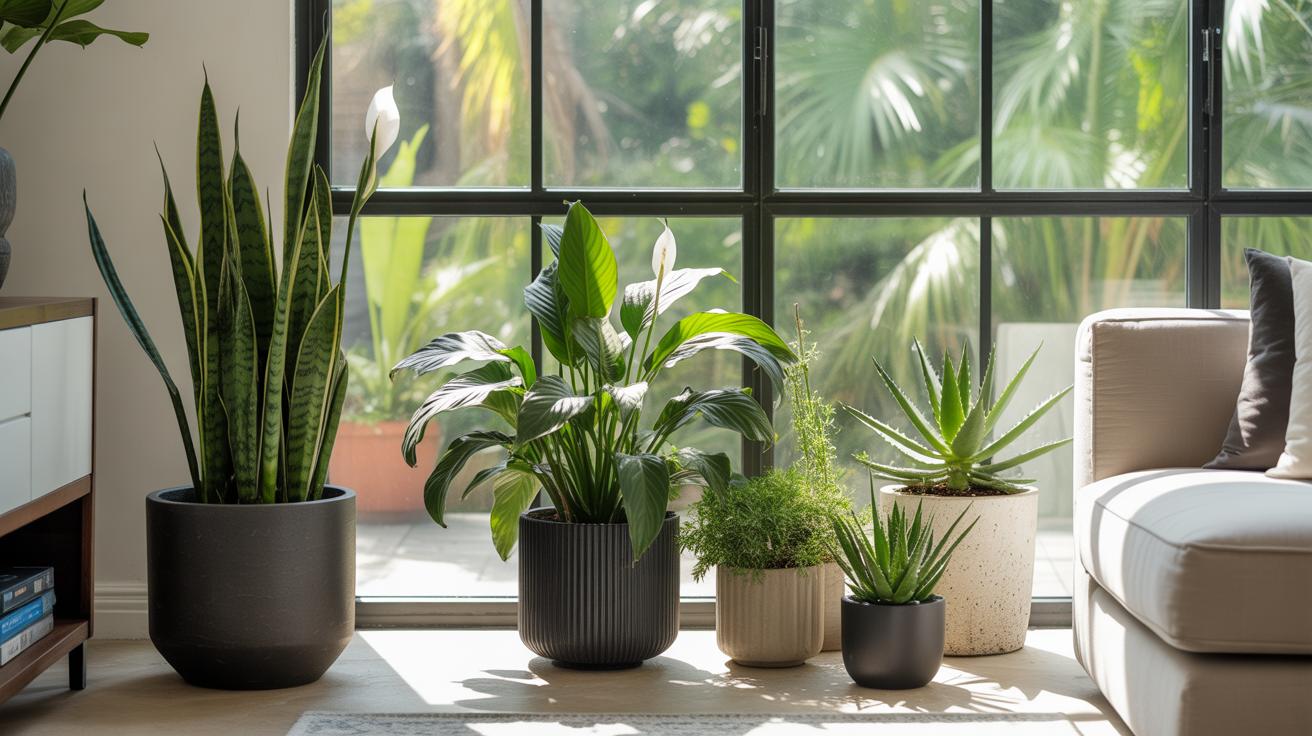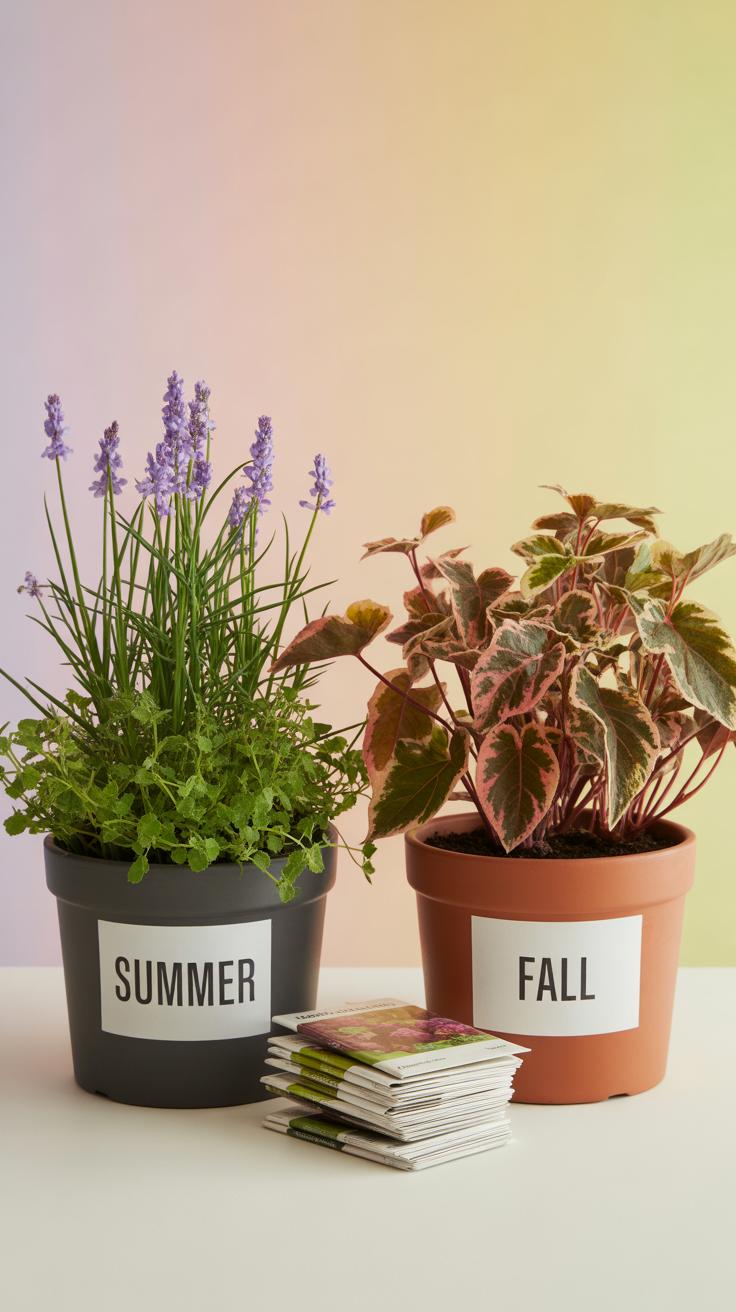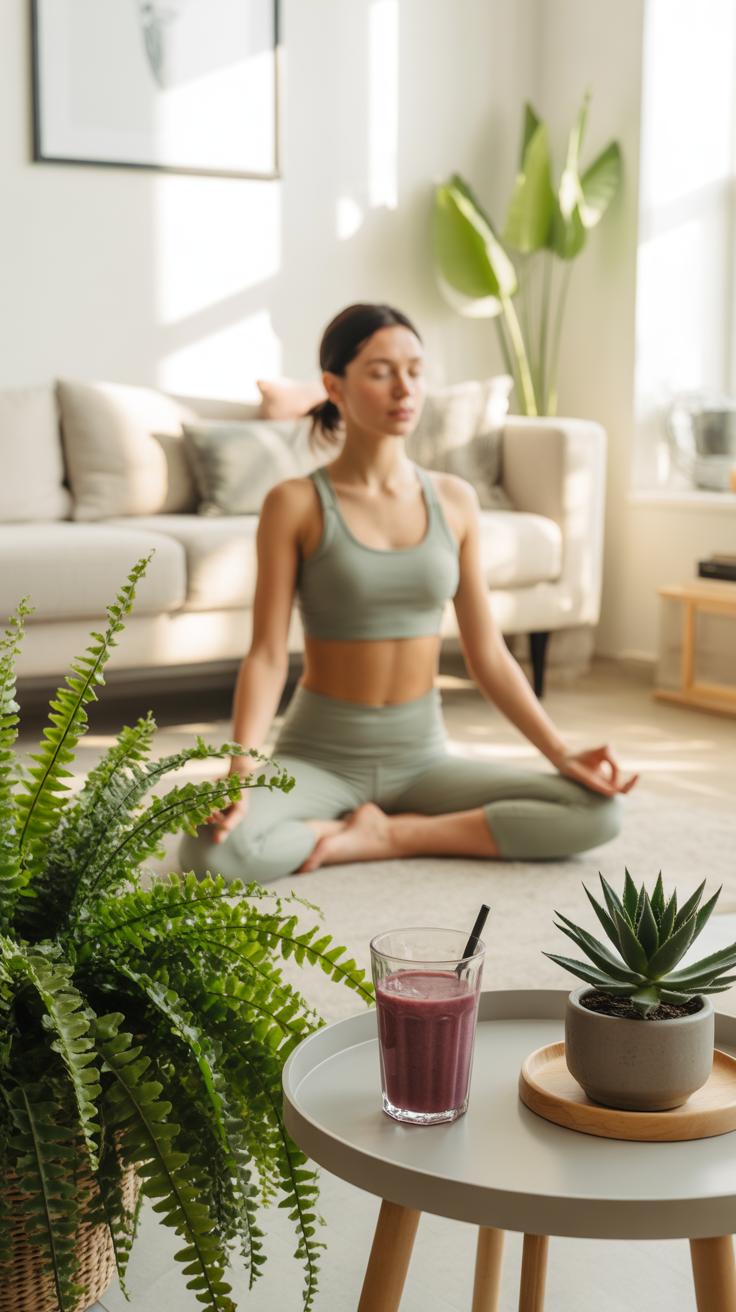Introduction
Designing A Tranquil Room With Plants Oasis is about bringing the calm and beauty of nature into your home. Plants can change a plain room into a relaxing retreat. They offer fresh air and add life to your indoor space.
This article explores how to pick plants that fit your room and lifestyle. It guides you through caring for your plants so they thrive. You will learn how to arrange them for the best effect. By the end, you will be ready to create your green sanctuary.
Understanding Indoor Plants
Indoor plants are simply plants that thrive inside your home or office. Unlike garden plants, these are chosen because they can live comfortably with less natural light and more stable temperatures. Many indoor plants come from tropical forests or dry deserts, where they’ve adapted to survive in shaded or limited water conditions.
Take succulents, for example. They store water in thick leaves or stems, which helps them last long without being watered frequently. Epiphytes, like certain orchids or air plants, grow on other plants but don’t need soil. They absorb moisture from the air and do well in spaces with decent humidity. Then there are tropical plants, such as the peace lily or pothos, that can handle lower light and higher humidity found indoors.
What makes them suited for indoor life is their ability to adjust to indirect sunlight and controlled climates. This flexibility is key because, indoors, conditions rarely change as much as outdoors. So, if you’re thinking about adding some greenery, picking plants adapted to interiors can save you trouble later on.
What Makes A Plant Suitable For Indoors
Some plants just seem to get along better with indoor life. It’s mostly about a few traits:
- Light Tolerance – Many indoor plants prefer or tolerate low to medium light. Bright, direct sunlight isn’t always available indoors, so plants that can thrive with indirect or filtered light do better.
- Water Needs – Plants that don’t need constant watering are easier to care for. Succulents, for example, survive with occasional watering since they store water inside their leaves.
- Growth Habits – Smaller plants or those with slower growth fit better indoors. Big, fast-growing plants can quickly outgrow their pots and spaces.
Plants from tropical origins typically handle humidity and steady temperatures well. Their natural habitat’s shade gives them tolerance for less light indoors. Conversely, desert plants adapt by using water efficiently, meaning they don’t suffer if you occasionally forget to water them. This balance between light, moisture, and growth is crucial for indoor success.
Examples Of Popular Indoor Plants
Some houseplants are just crowd favorites because they look good and don’t demand much effort:
- Snake Plant – Leaves grow upright and look almost architectural. It tolerates low light and sparse watering. Great for beginners.
- Spider Plant – It has long, arching leaves with little “babies” that dangle. It’s hardy and can do well in indirect light, needing moderate watering.
- Aloe Vera – A succulent with thick, fleshy leaves. Easy to care for and useful around the house. Prefers bright, indirect light but survives in less.
Each of these brings a different texture and feel to a room, and they’re forgiving enough if you forget a watering or two. Curious about how a plant might change your space? Maybe start with one of these and see how it fits with your routine—and your room.
Benefits Of Having Plants In Your Room
Bringing plants into your living space does more than just brighten it up. They have a quiet but real effect on the air you breathe. Some plants, like spider plants and peace lilies, act like natural air filters. They absorb pollutants and release fresh oxygen, which means the air feels cleaner. It’s not just about looks; your indoor environment actually gets healthier.
But it’s not only about air quality. Having greenery around can nudge your mood in a better direction. Just glancing at a lush leaf or tending to a small pot can ease tension. Many people find the act of caring for plants surprisingly calming—almost like a tiny break from daily worries. It’s a simple way to invite stillness into a hectic day.
Also, plants affect the overall feel of a room. They add depth and life to spaces that might otherwise feel dull or stiff. Even a small cluster of plants can make a room feel more relaxed and welcoming. So, it’s not just a decoration choice; it’s a way to improve your well-being in subtle but meaningful ways.
Choosing The Right Plants For Your Space
Picking plants for your room isn’t as simple as grabbing the first pretty one you spot. You need to look at your room’s light, size, and how much time you really have to care for them. For example, a tiny, shaded bedroom won’t support the same plants as a sunlit kitchen. At least, not without some frustration.
Start by figuring out the light. Is it low—like north-facing windows or shaded by trees? Medium, where sunlight filters through but doesn’t blaze in? Or bright, with direct sunlight for most of the day? Each light level calls for very different plants.
Size matters, too. A big fiddle leaf fig might overpower a small nook, while tiny succulents may seem lost in a cavernous living room. Think about your furniture layout—plants should complement, not crowd. Also, consider your schedule: if you’re busy, go for lower-maintenance options.
Assessing Your Room’s Light Level
Trying to figure out if your room gets low, medium, or bright light can take a bit of trial and error. A room with no windows obviously counts as low light. But sometimes, a room with a window isn’t actually bright if trees or buildings block direct rays.
Here’s a rough guide to test it: see if you can read a book comfortably near the window without turning on lights. If yes, and the sun shines directly on the spot much of the day, that’s bright light. If it feels more shaded, medium light works better. Low light means little to no direct sun — perfect for plants like snake plants or pothos. These can handle neglect and shade.
Matching Plant Size To Room Space
Try not to cram too many large plants into a small room. Big plants demand space and can overwhelm. If you have limited space, choose medium or small plants that fit nicely on shelves or tables.
That said, sometimes a large plant works well if you have a bare corner you want to fill. A tall, slim plant like a dracaena can create presence without bulk. Often, mixing sizes looks natural—tall plants paired with small pots on a nearby shelf. It’s a balancing act, really.
Think about how you move around your room. You don’t want plant leaves bumping into you or furniture. Give them breathing room. It’s easy to get carried away with adding greenery, but less can be more if the plant fits your space and lifestyle. What matters most is that the plants feel… right where they are.
Plant Care Basics
Taking care of indoor plants might sound straightforward, but it can get tricky if you don’t pay attention to the basics. Watering is often where people slip up. Too much water drowns roots; too little, and they shrivel. A good way to check is by poking your finger about an inch into the soil—if it’s dry there, it’s time to water. But don’t just guess; plants don’t all share the same thirst. Some prefer consistently moist soil, while others like to dry out between drinks.
Light is another big factor. Some plants thrive in bright, direct window light, while others prefer shaded corners. Observe your space: does sunlight crawl across the room or stay strong near the window? Knowing that helps you match a plant’s needs to your room’s quirks. For example, snake plants tolerate low light but thrive with some indirect sun.
Temperature matters, too, although most common houseplants tolerate usual indoor ranges. Avoid placing plants near cold drafts or heating vents. If your room swings between hot days and cooler nights, that might stress some greenery.
Soil isn’t just dirt. A well-draining mix helps keep roots healthy. Many plants like soil that holds moisture yet lets excess water escape. Repotting yearly or every two years can refresh the soil and prevent compaction.
In short: water thoughtfully, respect light needs, mind temperature swings, and choose the right soil. Even with simple steps, your indoor oasis can thrive a bit more each day. Have you noticed how a slightly dry or soggy leaf signals what your plant needs? Sometimes, paying attention there is the best guide of all.
Arranging Plants For A Relaxing Room
Placing plants in your room isn’t just about filling corners or windowsills. It shapes how you feel when you walk in. You want to create pockets of calm that invite you to pause, breathe, maybe even sit down with a good book. Grouping plants can help achieve that sense of peace. Try clustering a few with different textures and heights rather than scattering single pots around. The way they overlap can make a cozy, natural nook. But don’t feel you must stick to a strict rule; sometimes a single statement plant on its own does the trick.
Think about mixing tall, spindly plants with rounder, bushier ones—like a snake plant next to a fern. It keeps your eye moving but not overwhelmed. Also, varying leaf shapes and colors will add subtle interest, especially when the light changes during the day.
Containers and stands matter more than you might guess. You want pots that feel part of the room, not just vessels. If your space is minimalist, clean-lined, neutral-toned pots often work well. But perhaps you like something warmer or more textured; ceramic or woven baskets can bring a softer touch. Stands do double duty: they lift plants into eye level for better viewing and improve airflow around leaves, which certain species prefer.
- Group plants in odd numbers for a natural feel
- Mix heights and leaf shapes for visual interest
- Use stands to raise plants, creating layered depth
- Choose pots that echo your room’s style but also suit the plant’s needs, like drainage or size
- Don’t overcrowd—leave some breathing space to avoid a cluttered feeling
What if your room is small? Consider vertical arrangements—hanging planters or tiered stands—to maximize space without losing a peaceful vibe. Sometimes, experimenting with placement over days or weeks helps you find what truly feels right for you. After all, this is your sanctuary, so trust your instincts about where plants belong.
Creating A Routine For Plant Care
Keeping plants healthy indoors means more than just watering when you remember it. A simple weekly or monthly schedule can make a real difference—and it doesn’t have to feel like a chore. Think about setting specific days for different tasks to keep things manageable.
For example, you might water most houseplants once a week but check succulents less often. Feeding plants with fertilizer every 3-4 weeks can keep them thriving, while wiping dust off their leaves every couple of weeks helps them breathe better and look fresh.
Here’s a basic schedule you could try:
- Water: Weekly or as soil feels dry to the touch
- Feed: Every 3-4 weeks during growing seasons
- Clean leaves: Every 2 weeks, gently wipe with a damp cloth
- Health check: Weekly look-over for pests or trouble spots
It helps to set reminders on your phone or calendar. If you’re like me, relying on memory alone quickly leads to forgetfulness. Apps designed for plant care can prompt watering and feeding too—so you’re less likely to miss these tasks.
When checking your plants, look for yellowing or curling leaves, drooping, or spots with unusual colors. Brown tips could mean underwatering or dry air, while sticky residue might signal pests. Early detection makes fixing problems easier, often just needing a bit of pruning or pest treatment.
Remember, each plant is a little different. Learning their quirks as you go can keep your indoor oasis calm and beautiful—rather than overwhelming. Does your plant need a bit more attention this week? Or maybe less? That’s all part of the process.
Using Plants To Improve Room Air Quality
Indoor plants do more than just brighten up a space. They can actually help clean the air around you. Studies suggest that certain plants absorb harmful gases through their leaves and roots, breaking down these pollutants into less harmful substances. It’s almost like having a natural air filter working quietly in the background. Yet, the effects vary. You can’t expect a single plant to detoxify your whole room completely. Still, even a few can make the air feel fresher, which many people notice.
Plants That Remove Common Indoor Pollutants
Some plants are more effective at removing toxins than others. For example:
- Spider Plant: Known to reduce carbon monoxide and benzene levels.
- Peace Lily: Helps eliminate formaldehyde and ammonia.
- Boston Fern: Good at filtering out pollutants like xylene and toluene.
- Snake Plant: Absorbs benzene, formaldehyde, and trichloroethylene.
- English Ivy: Reduces airborne mold and formaldehyde.
Some of these plants might be familiar, while others could be new additions to your collection. It’s curious how plants you often see in offices or homes might be quietly improving air quality without anyone really noticing.
How Many Plants Do You Need
The question many ask is: “How many plants do I really need to see a difference?” Research suggests about one plant per 100 square feet can start to make a small impact on air quality. So, for a typical bedroom or living room, around 3 to 5 medium-sized plants could help. Of course, this depends on things like room size, ventilation, and pollution sources.
More plants aren’t always better either. Too many can make the space crowded or increase humidity in ways that might not suit everyone. It’s a balance, really. You want enough greenery to help, but not so much that the room feels overrun or becomes a chore. Have you noticed how sometimes a few well-placed plants just *feel* right? That might be partly thanks to cleaner air, but also just to the calm vibe they create.
Adjusting Your Plant Selection Seasonally
Plants inside your room aren’t static—they respond to the changing seasons just like you do. As daylight shifts and temperatures fluctuate, your green companions need slightly different care or even a new spot to thrive. For example, many plants might enjoy a sunny windowsill in summer but struggle there in winter when that light becomes weak and cold drafts creep in.
During colder months, you could move some plants to warmer, brighter areas. Sometimes that means a bit of trial and error—your fiddle-leaf fig might sulk if it’s too chilly or dim. Pay attention to leaves curling or yellowing; those can be clues.
Watering habits also need tweaking. Because sunlight drops in winter, plants use less water, so overwatering becomes a risk. Conversely, when spring arrives and light grows stronger, you might step up watering and even add new plants that enjoy longer daylight.
Temperature shifts matter too. Most indoor plants like consistent warmth but don’t enjoy sitting near heaters or cold windows. Moving them slightly away from these extremes can help. I’ve found rotating plants every season helps them adjust better—it might be a bit extra work but worth it.
Preparing Plants For Winter
Winter can feel harsh on indoor plants, mainly because days are shorter and temperatures drop. To keep plants healthy, start by assessing your space’s light levels. If natural light is poor, consider swapping plants to brighter rooms or supplementing with grow lights.
Humidity tends to drop indoors in winter, especially with heating on. Misting your plants or using a humidifier can make a difference—some plants just don’t like dry air and might drop leaves otherwise. You may want to ease off on fertilizing since plants grow slower in cooler months.
Also, check pots and soil. Sometimes repotting before winter or refreshing soil can help roots stay vigorous. I usually clean leaf dust off too; it’s surprising how much that improves light absorption.
Watch for signs like leaf drop or drooping—they’re often early warnings to change care routines. Keeping your plants out of drafty spots is generally smart—cold air can be shockingly bad for many species.
Refreshing Your Plant Choices In Spring
Spring brings more light and warmth, making it an excellent time to rethink your plant collection. You might want to bring in fresh plants that thrive in increased sunlight or move favorites back to sunlit corners after winter hibernation.
Introducing new greenery can be as simple as choosing plants that bloom in spring or that show rapid growth during this period. Think about climbing plants or flowering types that add texture and color.
It’s also a good moment to clean and prune existing plants, encouraging new growth. Sometimes, I find that rearranging plants or changing pots renews the room’s energy. It might sound a bit superstitious, but the plants seem to respond well.
Remember to slowly increase watering and feeding, matching their waking-up pace. Sudden changes might stress them, so take your time as days get longer.
Incorporating Plants Into Your Lifestyle
Tending to plants doesn’t have to be a big time commitment, but weaving small habits into your day can really change how you feel. Even just a minute spent checking soil moisture or trimming a leaf can create a sense of calm and purpose. It’s less about perfect care and more about connection—like a quiet moment between you and something living.
Try setting simple routines, like watering your plants each morning or dusting their leaves before bed. These brief actions build a rhythm and make plant care part of your daily life naturally. You might find your mood lifts just by the sight of new growth or the feeling of soft soil between your fingers. Some people say plants boost creativity—maybe that’s true, or maybe the break from screens just helps you think clearer.
When you step into your plant-filled room, pause for a moment. Notice the stillness, the subtle scents, the way light shifts through leaves. Let the space be for you what you need—a calm corner, a green escape. It’s okay if your plants aren’t perfect. The room isn’t about control, it’s about presence. Does that change how you treat the space? Sometimes I find myself lingering a little longer because of this simple shift.
Conclusions
Choosing the right plants and caring for them well turns any room into a peaceful oasis. Your plants will clean the air and add a fresh look. Simple care steps keep them healthy and growing.
Using plants in your design brings calm and nature inside. Your tranquil room will be a place to relax and recharge every day. Start your plant journey today and enjoy your green oasis.

